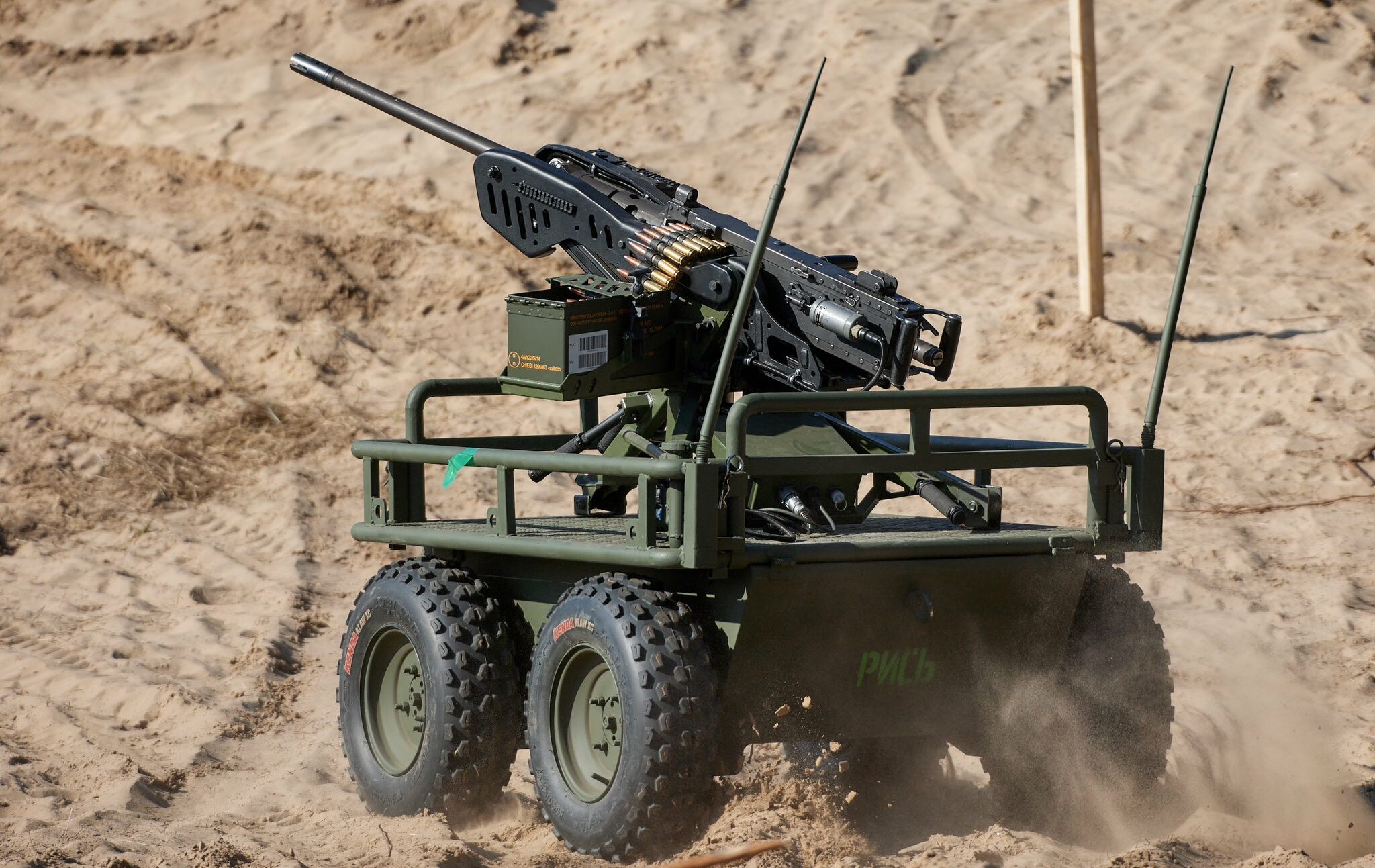
The first military robots were aerial drones.
They act as spies, supply delivery vehicles and most visibly as bombers.
Some are large, expensive machines, somewhat similar to cruise missiles.
More ubiquitous, versatile, cheap and revolutionary are the small drones, operated by the army rather than the air force.
They have transformed the battlefield, rendering everything and everyone vulnerable to attack, even when concealed and/or dug in.
Meanwhile other, sea and land 'drones' have been developed:
naval drones, which attack large ships;
Unmanned Ground Vehicles (UGV), including simple transports, mine clearers, spies and combat vehicles;
unmanned gun turrets, both static and mobile.
Many land robots drive around on wheels or have tracks; a few walk like animals.
Other means of locomotion, like snake wiggles, are still experimental.
Most robots are remote controlled.
A popular operational mode is First Person view (FPV), where the robot is equipped with a camera that sends real time footage back to an operator, who is situated behind the frontline.
Some use GPS and radio signals to navigate, while others use very long thin optical fibers, to prevent GPS those signals being jammed.
A few robots are fully autonomous, capable of making tactical decisions.
At the moment the balance still leans towards remote control, but advances in the development of artificial intelligence spurs a trend towards greater autonomy.
Unlike humans, robots do not suffer from fear, hesitation or fatigue.
However they can run out of fuel / battery power and sometimes have mechanical breakdowns.
The computers that form the 'brains' of the robots are capable of only rudimentary intelligence, forcing them to rely on a mix of preprogrammed respones and human guidance.
Because of this mix of potential and limitations, the immediate future will probably mix robots with human soldiers, the robots acting like another kind of weapon(s) in the arsenal of the armed forces.
In the long term, with robots becoming more maneuverable and intelligent, capable of making their own tactical decisions, we are likely to see true 'robot wars', combat by robots against robots.
War Matrix - Military robot
Global Age 1991 CE - present, Weapons and technology


